All OJJDP publications may be viewed and downloaded on the publications section of the OJJDP Web site. Print publications may be ordered online at the National Criminal Justice Reference Service (NCJRS) Web site.
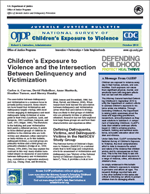
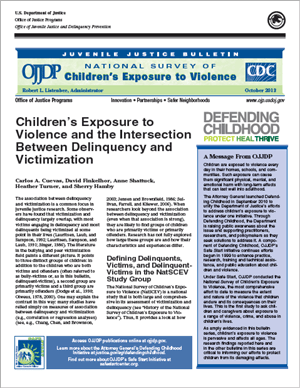 Children's Exposure to Violence and the Intersection Between Delinquency and Victimization (Bulletin) NCJ 240555
Children's Exposure to Violence and the Intersection Between Delinquency and Victimization (Bulletin) NCJ 240555
National Survey of Children's Exposure to Violence Series
This bulletin presents data from the National Survey of Children's Exposure to Violence (NatSCEV). Sponsored by OJJDP, NatSCEV is the most comprehensive nationwide survey to date of the incidence and prevalence of children's exposure to violence. This bulletin examines the rates of delinquency and victimization among children and youth ages 10–17. Among other findings, boys ages 13–14 and girls ages 11–12 were found to have an elevated risk of becoming delinquent-victims (i.e., experiencing high levels of both delinquency and victimization), suggesting that interventions with at-risk youth should be timed with their entry into middle school or high school.
To view and download this publication, or to order a printed copy, visit the NCJRS Web site.
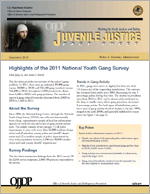
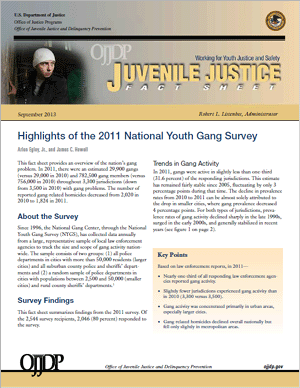 Highlights of the 2011 National Youth Gang Survey (Fact Sheet)
Highlights of the 2011 National Youth Gang Survey (Fact Sheet)
NCJ 242884
This fact sheet provides an overview of findings from the 2011 National Youth Gang Survey. Since 1996, the National Gang Center has collected data annually from a large, representative sample of local law enforcement agencies to track the size and scope of the nation's gang problem. Among other findings, the 2011 survey showed that gang-related homicides increased more than 10 percent from 2009 in cities with populations of more than 100,000. In addition, highly populated areas accounted for the vast majority of gang-related homicides nationally.
To view and download this publication, or to order a printed copy, visit the NCJRS Web site.
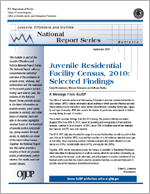
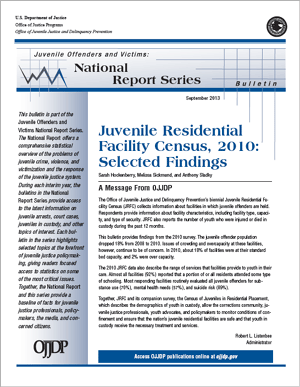 Juvenile Residential Facility Census, 2010: Selected Findings (Bulletin) NCJ 241134
Juvenile Residential Facility Census, 2010: Selected Findings (Bulletin) NCJ 241134
Juvenile Offenders and Victims National Report Series
The biennial Juvenile Residential Facility Census (JRFC) collects information about facilities in which juvenile offenders are held. Respondents provide information about facility characteristics, including facility type, capacity, and type of security. The OJJDP-sponsored JRFC also reports the number of youth who were injured or died in custody during the past 12 months. This bulletin provides findings from the 2010 survey. The juvenile offender population dropped 18 percent from 2008 to 2010. Issues of crowding and overcapacity at these facilities, however, continue to be of concern. In 2010, about 18 percent of facilities were at their standard bed capacity and 2 percent were over capacity. The 2010 JRFC data also describe the range of services that facilities provide to youth in their care.
To view and download this publication, or to order a printed copy, visit the NCJRS Web site.
